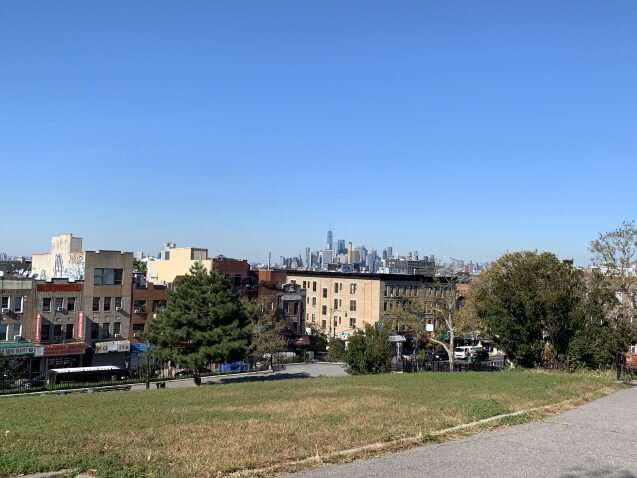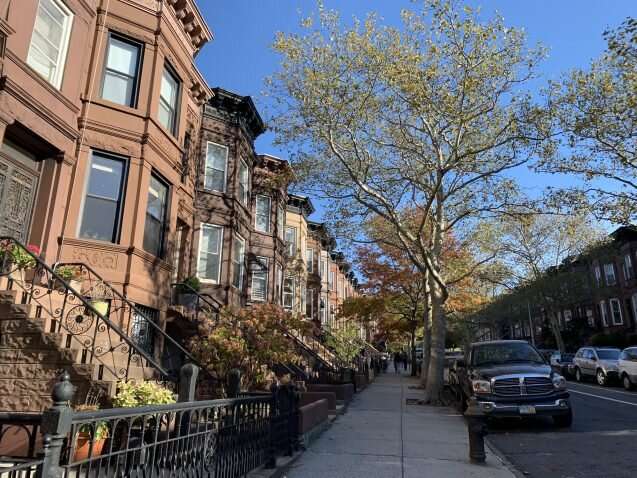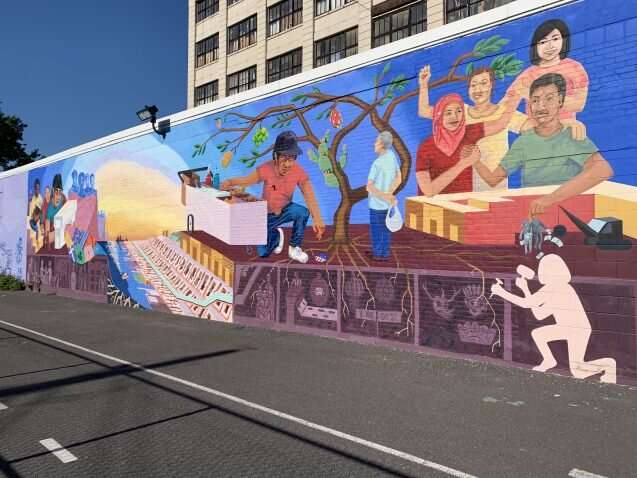Gentrification vs. sustainable neighborhood development in Sunset Park, Brooklyn

May 2020 will see Memorial Day, three primary elections and graduation at Columbia University. Newly graduated Columbia students will flock out of their dorm rooms and into the greater New York City area with their freshly printed diplomas and Pantone-292 gowns. But they will take something much more significant with them into their Brooklyn apartments: gentrification.
As students move into areas that have been historically low-income and predominantly home to people of color, former residents—many of whom have lived in these areas for decades—will be displaced due to the rising costs of living in their neighborhoods. While many frequently lament the effects of gentrification upon neighborhoods like Bushwick, Greenpoint, or Williamsburg, lesser-known neighborhoods are next in line to be devastated by an influx of residents from other places, too. Among these places is Sunset Park in Brooklyn.
Sunset Park is a waterfront neighborhood located between Bay Ridge and Park Slope, about a mile and a half from Prospect Park. With the Gowanus expressway constructed directly through it, it comprises an industrial waterfront area and a residential community home to many small businesses. It is famous for being one of Brooklyn's oldest "walk-to-work" communities: historically, residents who were employed at the factories along the shore would live in the residential communities adjacent to the waterfront. Nowadays, once-booming industry has declined tremendously and the demographics have shifted from primarily European immigrants to Latinx and Asian communities.
Given its location and susceptibility to coastal flooding, Sunset Park is extremely vulnerable to the effects of climate change. As New York City as a whole attempts to adapt itself to be more sustainable and reduce the devastating effects of the climate crisis, neighborhoods like Sunset Park are going to have to change dramatically to survive. In this inevitable transition, one key question remains: Will development for climate change resilience help rebuild Sunset Park for its residents by creating jobs, or will it merely enable the growth of real estate development profits?

Currently, Sunset Park is at a crossroads. In the crucial debate surrounding how to develop Sunset Park, two main plans have emerged. One would bring sustainable development, green jobs, environmental justice, and opportunities for Sunset Park residents to benefit from the transition to sustainability; the other would bring profit to private real estate businesses, and use redevelopment as an opportunity to make money and bring jobs to people coming from other, wealthier neighborhoods.
The latter plan is being developed by Belvedere Capital Real Estate Partners, Jamestown Properties, and Angelo, Gordon & Co. Along the waterfront, in an industrial complex known as "Industry City," the group has drafted a controversial "Special Sunset Park Innovation District" rezoning proposal involving a $1 billion plan to create 1.3 million square feet of new industrial and commercial space housing hotels, educational facilities, retail spaces and parking. They plan to expand upon the already existing Industry City complex that has increased gentrification in Sunset Park and isolated itself from the rest of the community. With a host of hipster-esque businesses from an artisanal pickle shop to a sake distillery, residents of Sunset Park have continually expressed how this development was never meant for them. Instead of providing jobs for people who live in Sunset Park, it houses an elite co-working space called "Camp David" that costs $700 just for an assigned desk.
UPROSE, Brooklyn's oldest Latinx community-based organization, has a radically different idea for Sunset Park, one that merges climate justice with industrial development. UPROSE focuses on designating Sunset Park's waterfront as a "Green Resilient Industrial District" (GRID) offering an alternative rezoning plan with four main goals: preserving the industrial character of Sunset Park's waterfront, retaining and creating well-paid working class jobs, supporting green industrial innovation, and promoting climate resiliency and a just transition through a circular industrial economy. Under the GRID plan, UPROSE seeks to take back the industrial waterfront—which is currently the largest employer in Sunset Park—and develop it to be more sustainable, while using the transition to environmental sustainability to promote job growth. For example, plans already exist to construct a 385 kilowatt community solar cooperative system on the roof of the Brooklyn Army Terminal, which would provide many job opportunities to residents in the construction of the project.
Only the GRID plan truly adapts the waterfront to the 21st-century risks of climate change; there is no language in the Industry City rezoning plan about climate change resiliency, mitigation or adaptation techniques. Only the GRID plan offers opportunities for those who actually live in Sunset Park to benefit from the transition to green energy and sustainability practices. Only the GRID plan offers a future for Sunset Park that allows the residents who currently live there to stay.

New York City and the world are facing similar issues. However, as the debate around the Industry City rezoning continues and local Sunset Park activists repeatedly push for their community's demands, the world will be watching.
The redevelopment of Sunset Park will happen no matter what. The way in which Sunset Park will be developed is crucial to the future of sustainable development in areas set to be most impacted by climate change. Two futures exist for Sunset Park: one of gentrification and luxury real estate, the other of environmental justice, job growth and opportunities for people whose families have called Sunset Park their home for generations and deserve a stake in its transformation to sustainability.
As Columbia students graduate and go out into the world, we can have massive influence on the future of New York City. Anyone interested should get involved with UPROSE and pay attention to the communities they're moving into.
Provided by Earth Institute, Columbia University
This story is republished courtesy of Earth Institute, Columbia University http://blogs.ei.columbia.edu.




















